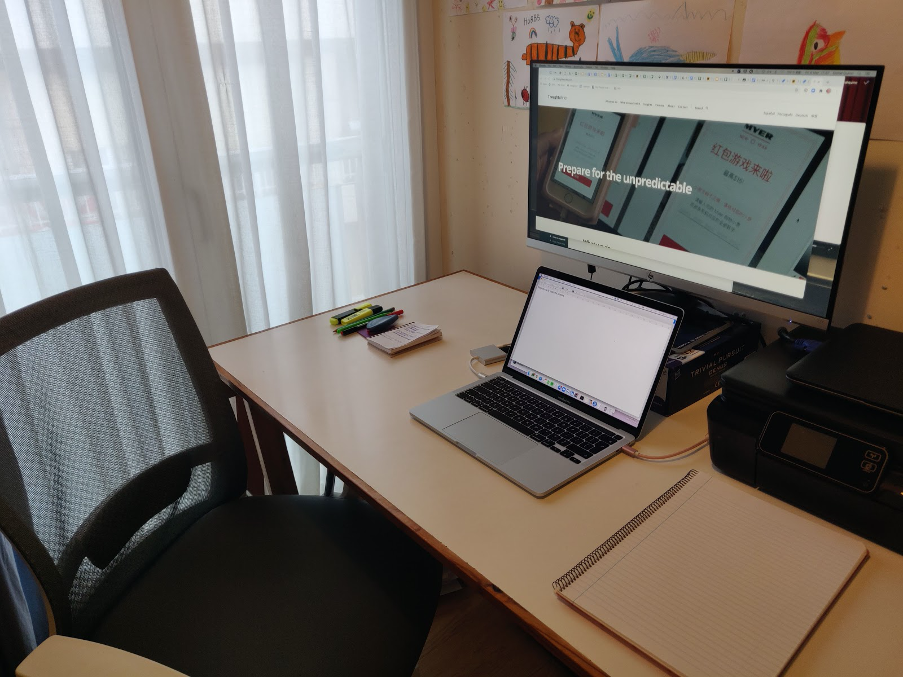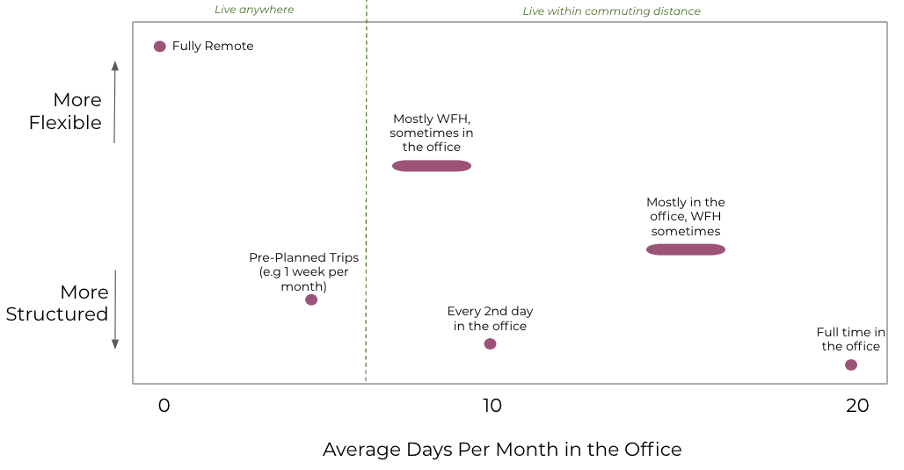
What’s next for remote working?
By
Published: March 10, 2021

My WFH setup - complete with inspirational artwork!
In the beginning, people went to the office because that was how you got work done. Meetings were face-to-face and work itself typically involved moving pieces of paper around in one way or another. Over time, the way work and meetings were done became increasingly digitized but most of us still went to the office because, well, that was what we did.
Suddenly, in March 2020 everything changed. The pandemic and the associated economic chaos caused health and financial trauma for millions but for a sizable and privileged group our work simply transferred to our homes. Our digitized work dovetailed neatly with the internet connectivity we had installed in our homes to stream movies and, before we knew it, the Great Remote Work Experiment of 2020 was underway.
Many months have passed and the Experiment continues for the moment. We are able to get work done, but many are questioning the cost of the isolation and decreased connections we have with our fellow employees. With vaccines rolling out, we can now actually look forward to a time when social distancing is no longer required, going back to the office becomes an option and the Great Remote Work Experiment comes to an end.
It’s too early to say what the results of the Experiment will be. But we can safely say that just because it will be safe to go to the office every day, this doesn’t mean that everyone will automatically do so. We have the tools to work remotely and we have shown that, for the most part, we can get work done. The question is do we want to work from home and do our employers want us to?
Given the range of options available, we are all going to have to think long and hard about what an office is and what value we get from it. This applies to both companies and employees. For some the answer is easy - there is no value in an office! These companies will become fully remote, maybe meeting up a few times a year in exotic locations. For other companies the value of the office was to exercise control and they will rush their employees back to the office and pretend that the Experiment never happened.
For everyone else the answer will be somewhere between those two extremes. On the graph below I have picked examples of remote working models, comparing them by the flexibility they offer the employee and the average days per month spent in the office.

Everyone looking at this list will automatically pick a favourite model or a variation thereof. Your choice will depend on your personality type, the type of work you do, what stage you are at in your career, your experience of office life, your commute, your home situation and so on.
The crunch, however, will be that every company will have to pick a working model. Some of the models are compatible but the dotted line marks an important division. Models that are on the right of the line require employees to live within commuting distance of the office, a big difference from those on the left.
Financial imperatives will mean that companies will have to make a choice and invest in the office space needed to make it work. Companies will also need to be explicit about their choice and the reasons behind it. That choice will be a defining and potentially disruptive moment for every company. There will be no easy answer because, regardless of what a company decides on, it is highly improbable that all their current employees will agree.
Another aspect that companies will have to consider is what exactly they mean by remote work. For now, many think of it from a geographic viewpoint, but true remote work would also allow employees to also be remote in timezone. This implies a more substantial change to working practices where work is done independently and synchronous meetings are less important.
My own workplace in Thoughtworks Barcelona is a nearshoring centre. This means that, instead of working at client locations, as is the norm for many other Thoughtworks offices, we mostly work for clients who are remote from us.They are typically based in northern Europe. It’s a good deal; we get to live in beautiful Barcelona and our clients get great value and the same amazing Thoughtworks experience. An occasional two-hour flight meant we could maintain the human touch.
This setup meant that our relationship and our work with our clients was not overly affected when the Great Remote Work Experiment began. As Thoughtworkers, we did however lose the fantastic experience of working together in our vibrant, fun office. We have worked hard to maintain the connections and friendships that we have forged but it's simply not the same.
There is a lot of thought going into what happens when the pandemic is over. In the meantime, TW Spain employees will be able to choose whether to work from home or come into the office for all of 2021. I am looking forward to seeing how many of my colleagues come to the office when we have the option to do so safely. Although Thoughtworks practices a very social form of software development (pairing, autonomous teams etc), as a demographic, developers tend towards introversion. So its no surprise that many colleagues I speak to are quite comfortable working from home where they can have more control over the social interactions they take part in.
Personally, I am really looking forward to being back in the Thoughtworks Barcelona office again, even though I know that it may never be quite the same as it was. I believe that there are lots of people who value, and indeed thrive, on the positive interactions and learning opportunities that a good office can provide. We will have to work hard to convince our colleagues that it’s worth the effort to come to the office and interact in person again. Maybe after the Great Remote Work Experiment we can try the Great Office Sales Pitch!
Disclaimer: The statements and opinions expressed in this article are those of the author(s) and do not necessarily reflect the positions of Thoughtworks.









